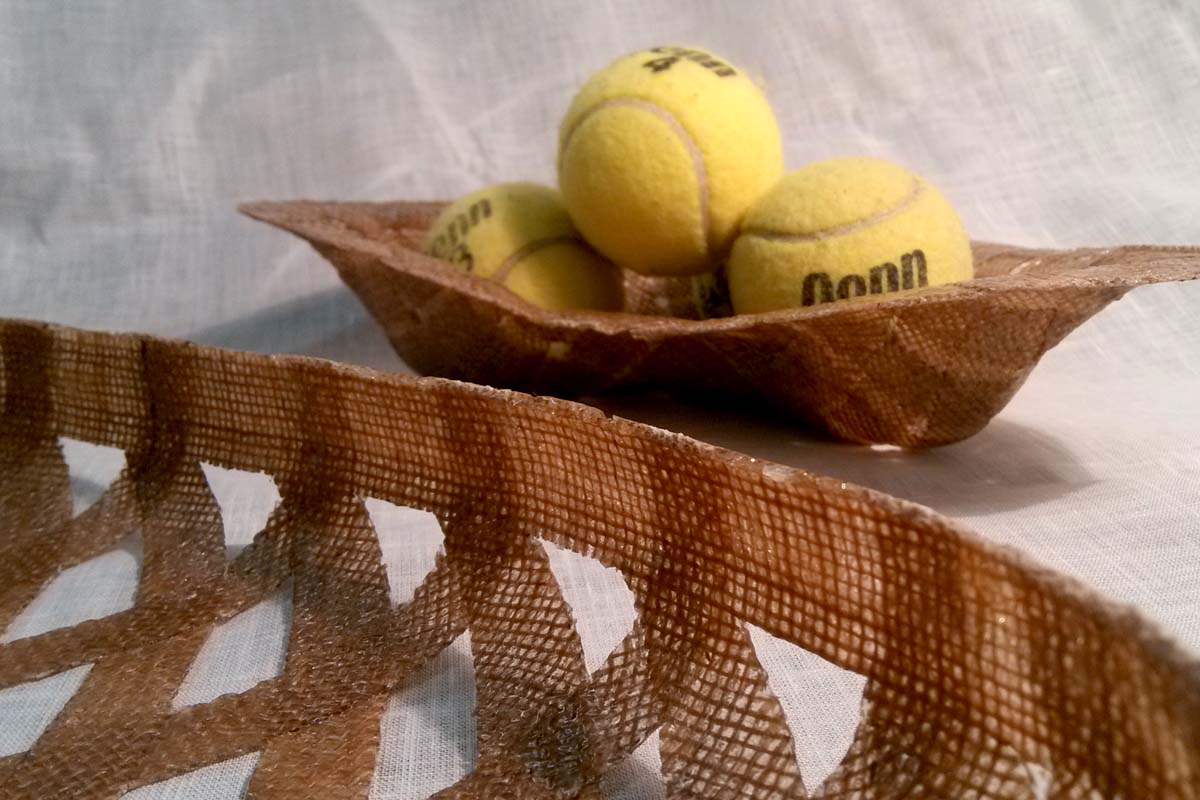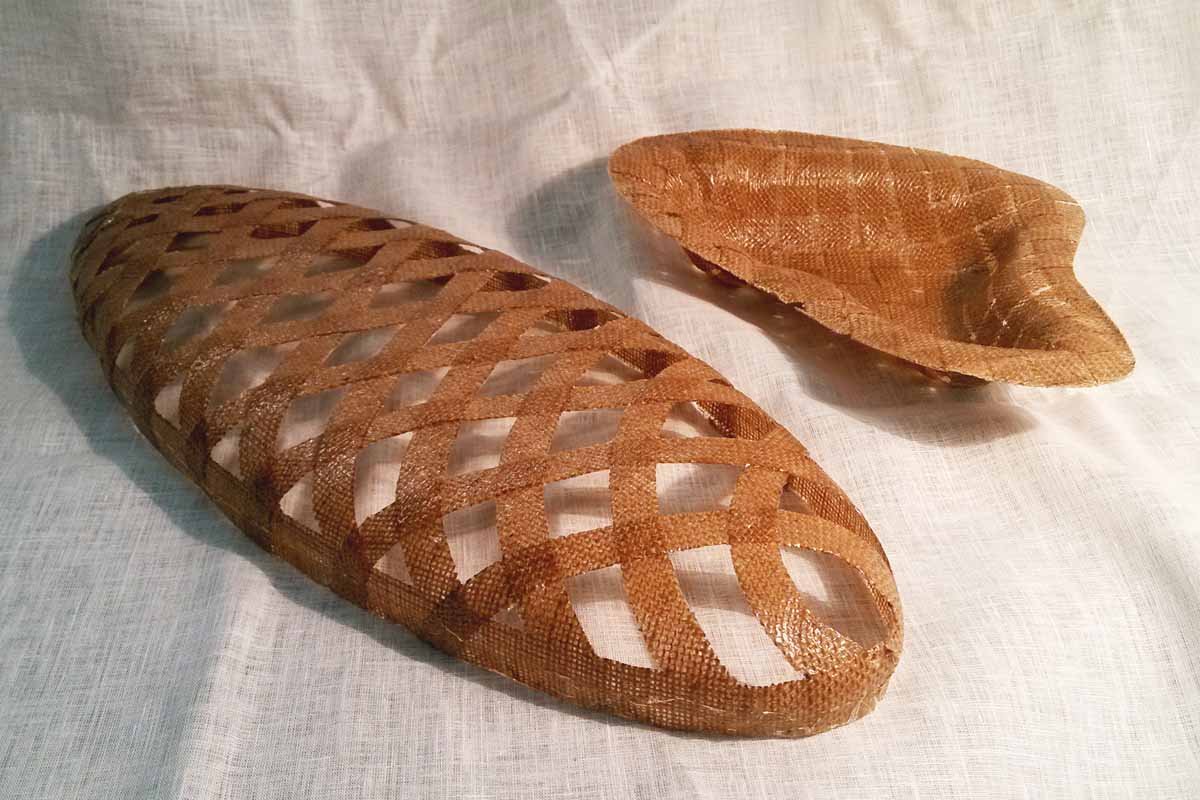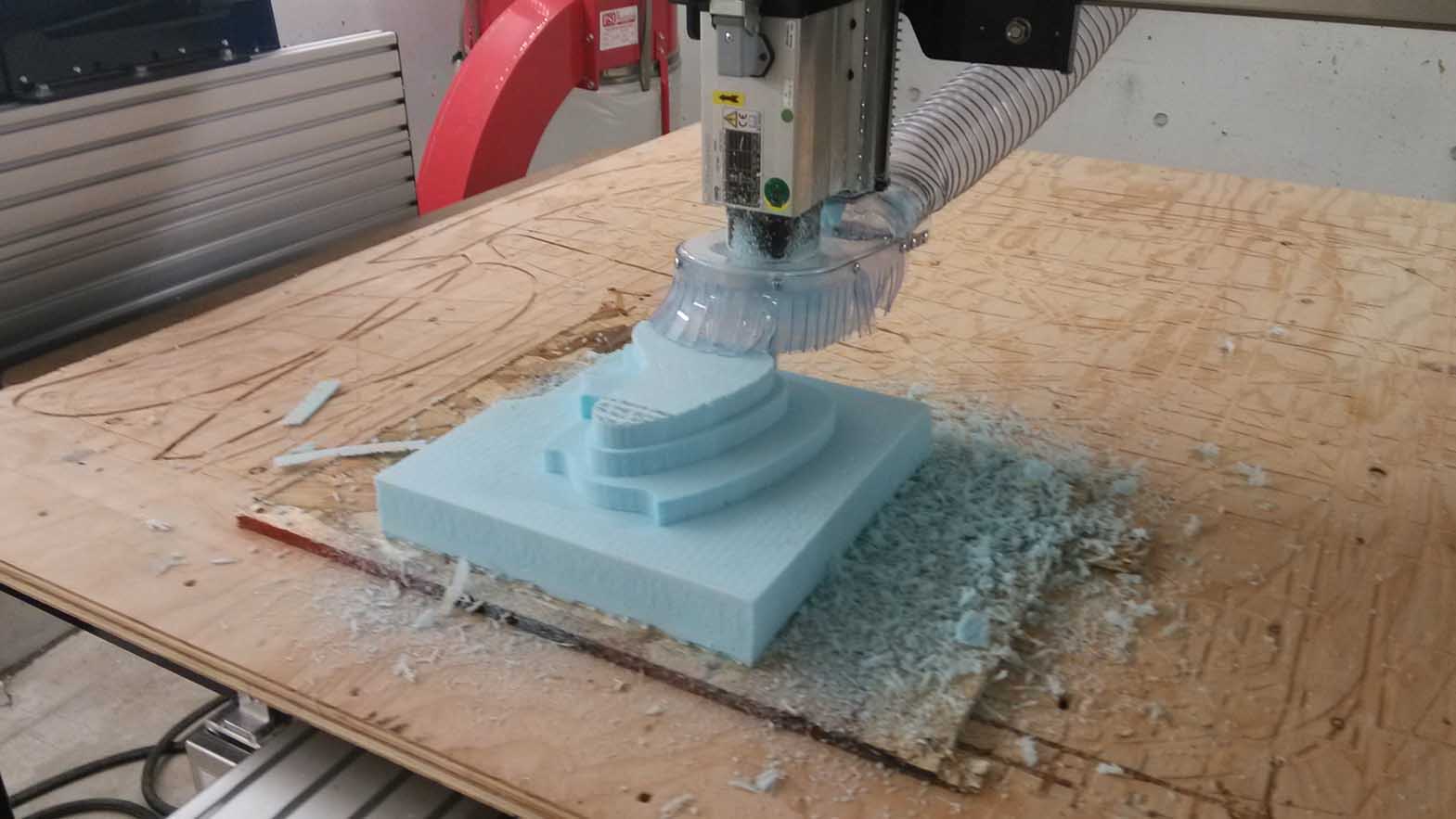
The first step was to design and mill a mold. I spent a lot of time trying to think of a design task that would require anisotropic distribution, but ultimately just settled on a fruit bowl...mostly as an excuse to make an arbitrary amoeba-shaped geometry that was double curved with varying degrees of curvature, so as to test how the composite technique adapted to different geometric conditions.

Final pass. Resolution is not super important, these tooling marks were not picked up by the burlap/resin matrix.
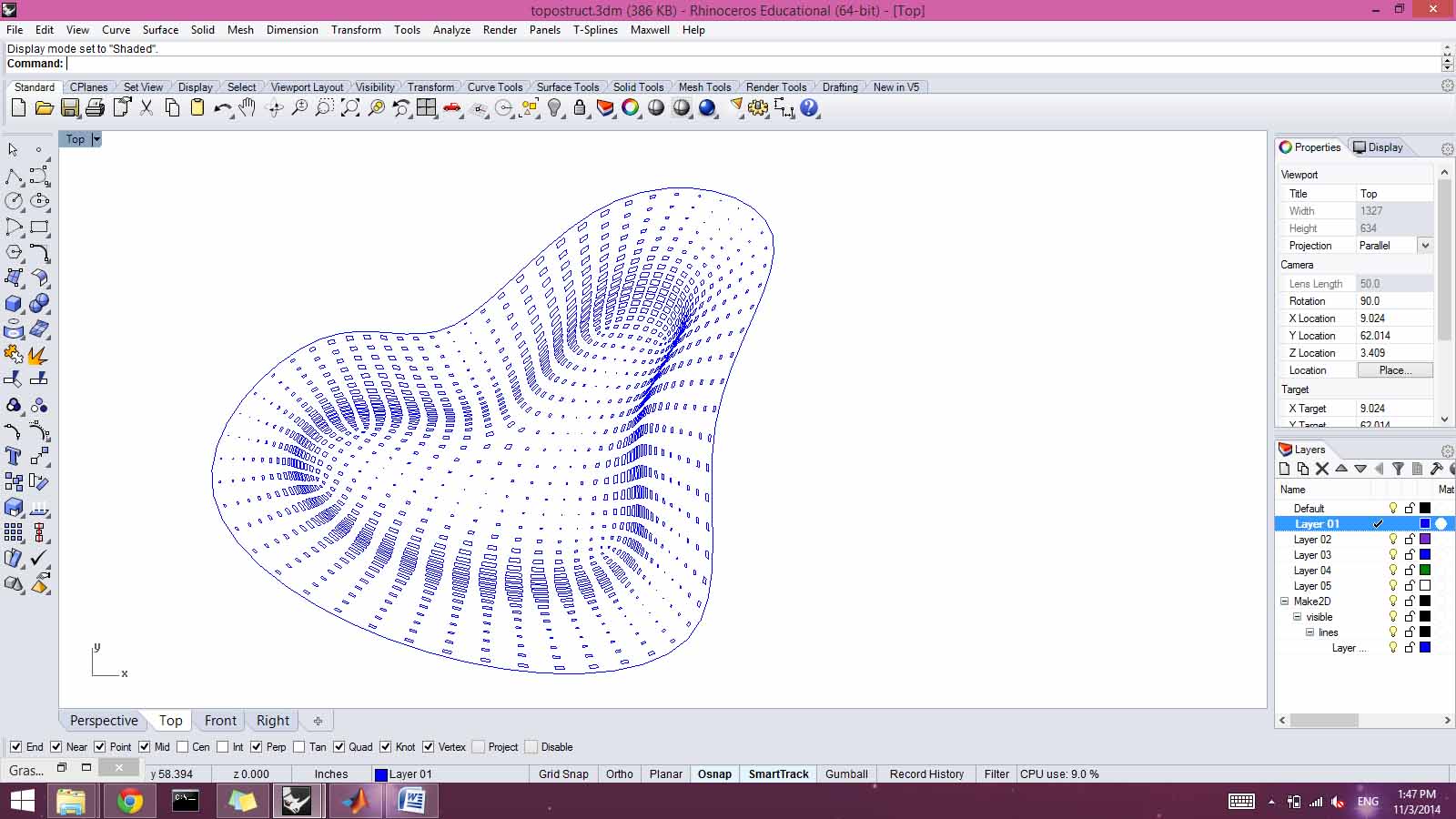
With milling done, it was time to think of ways to unevenly distribute the burlap. I looked into several techniques but ultimately decided to try laser cutting perforations. I figured that just etching would make the burlap week enough to stretch a bit without completely tearing apart.
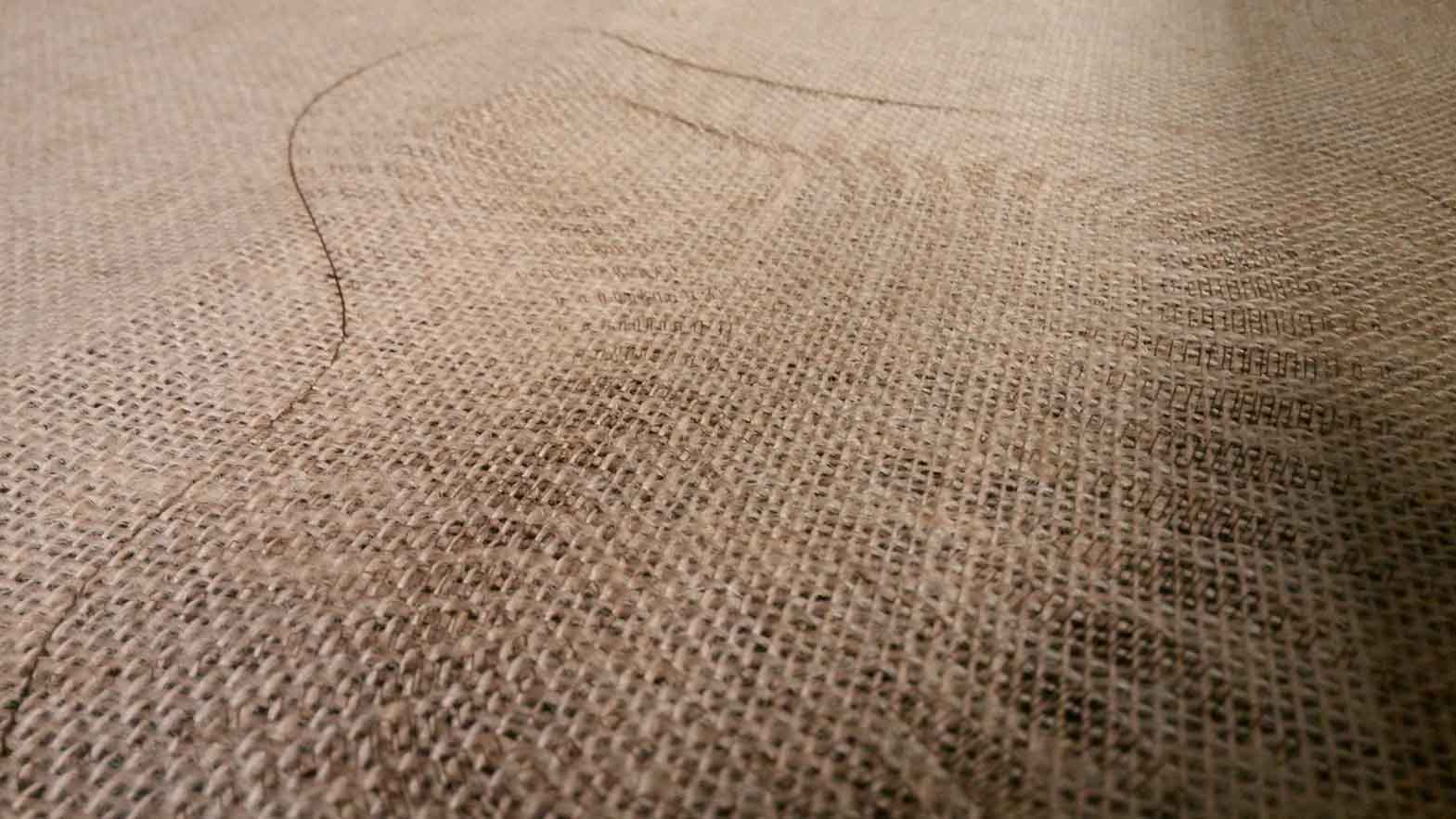
Burlap after being laser etched.
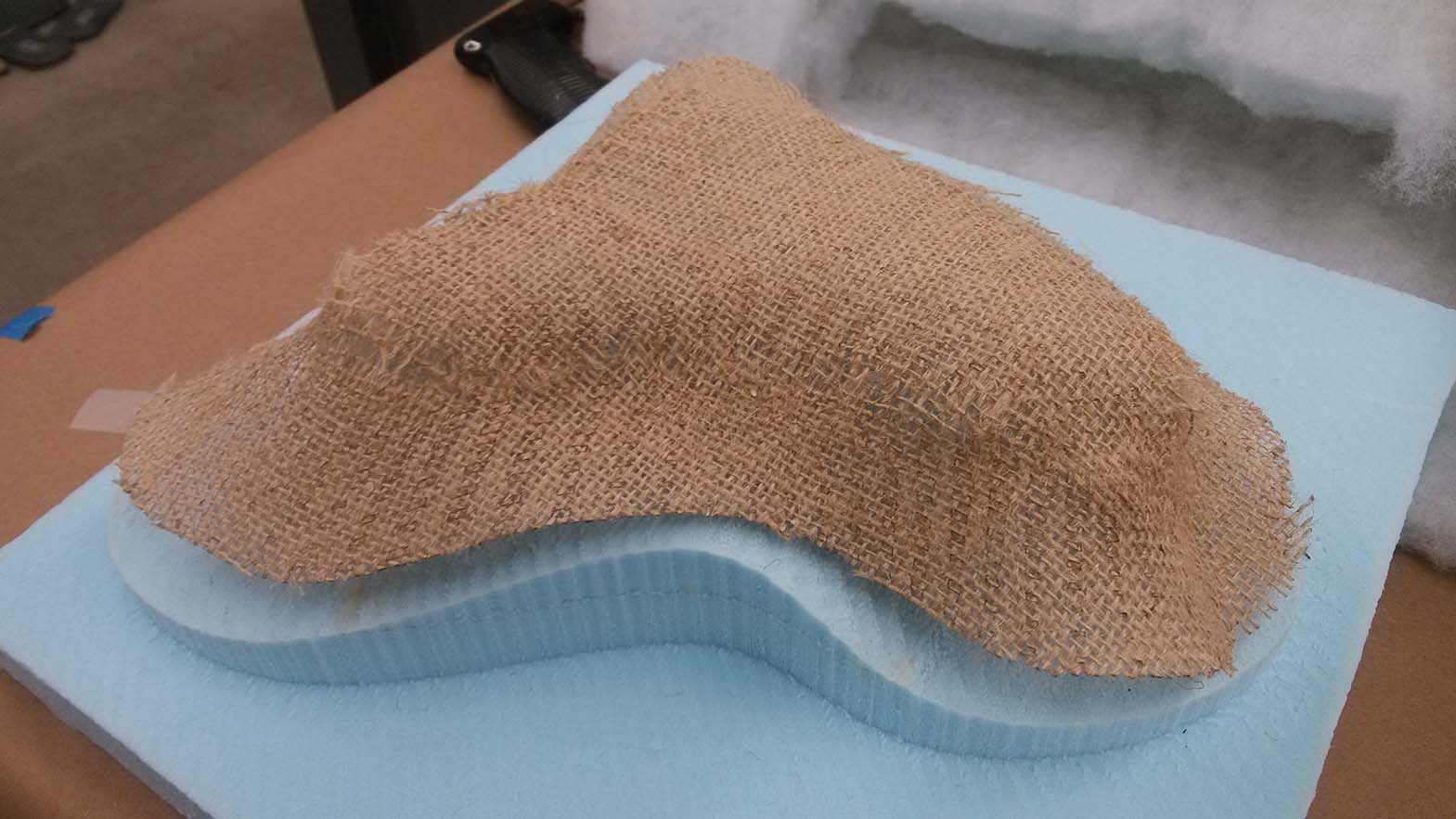
Unfortunately, the results were pretty disappointing. Turns out that burlap is pretty tough to control. Most of the fibers ripped completely, but it was intact enough to cover with resin and cast.
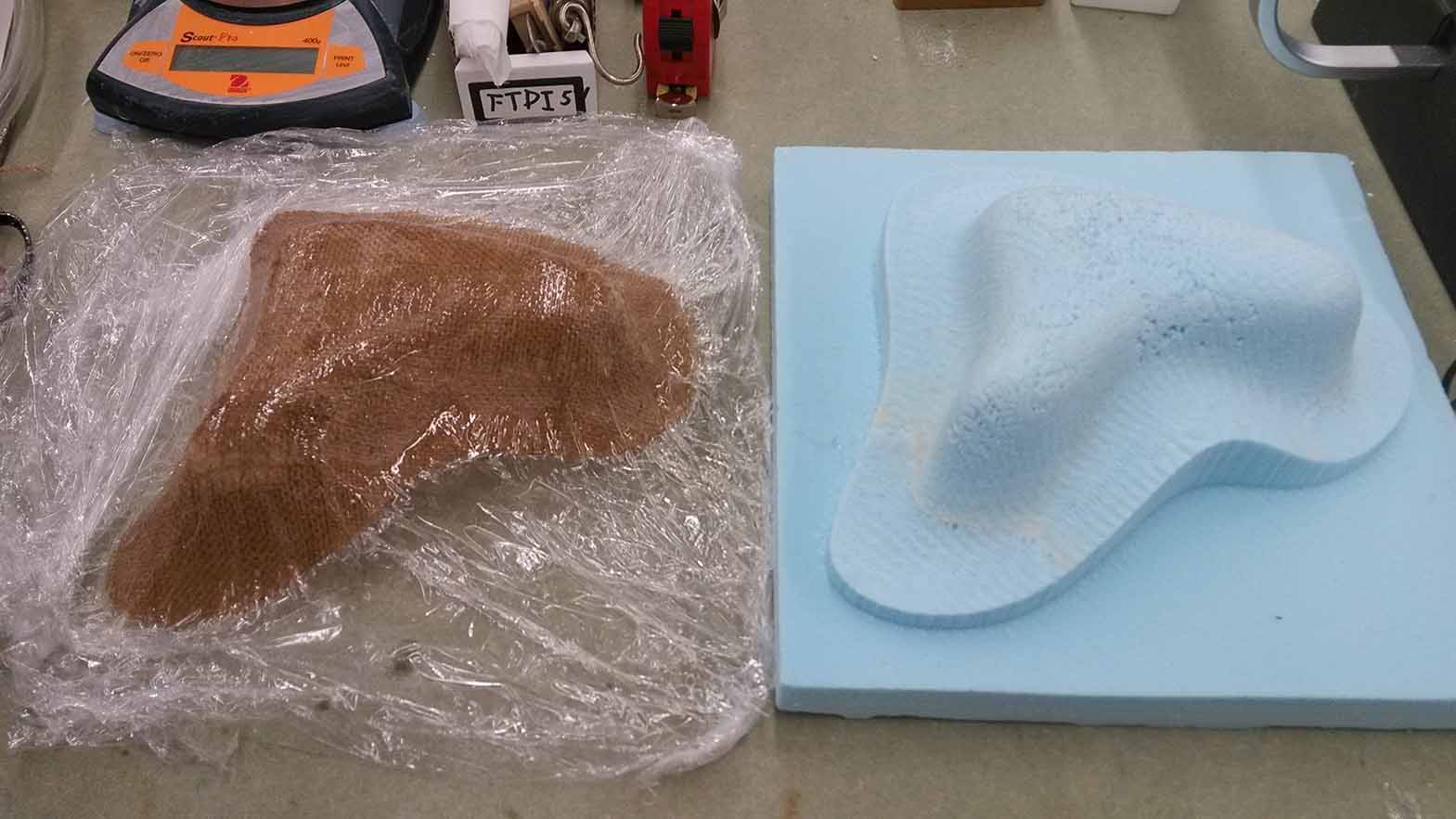
The resin was applied after the burlap was laid up, which was a bit of the reveral of the typical technique. It was a bit tough to evenly spread the resin, and some spots ended up dry while others were over covered. The result was that it ended up as a bowl of sorts, though very flimsy and ugly. Fail.
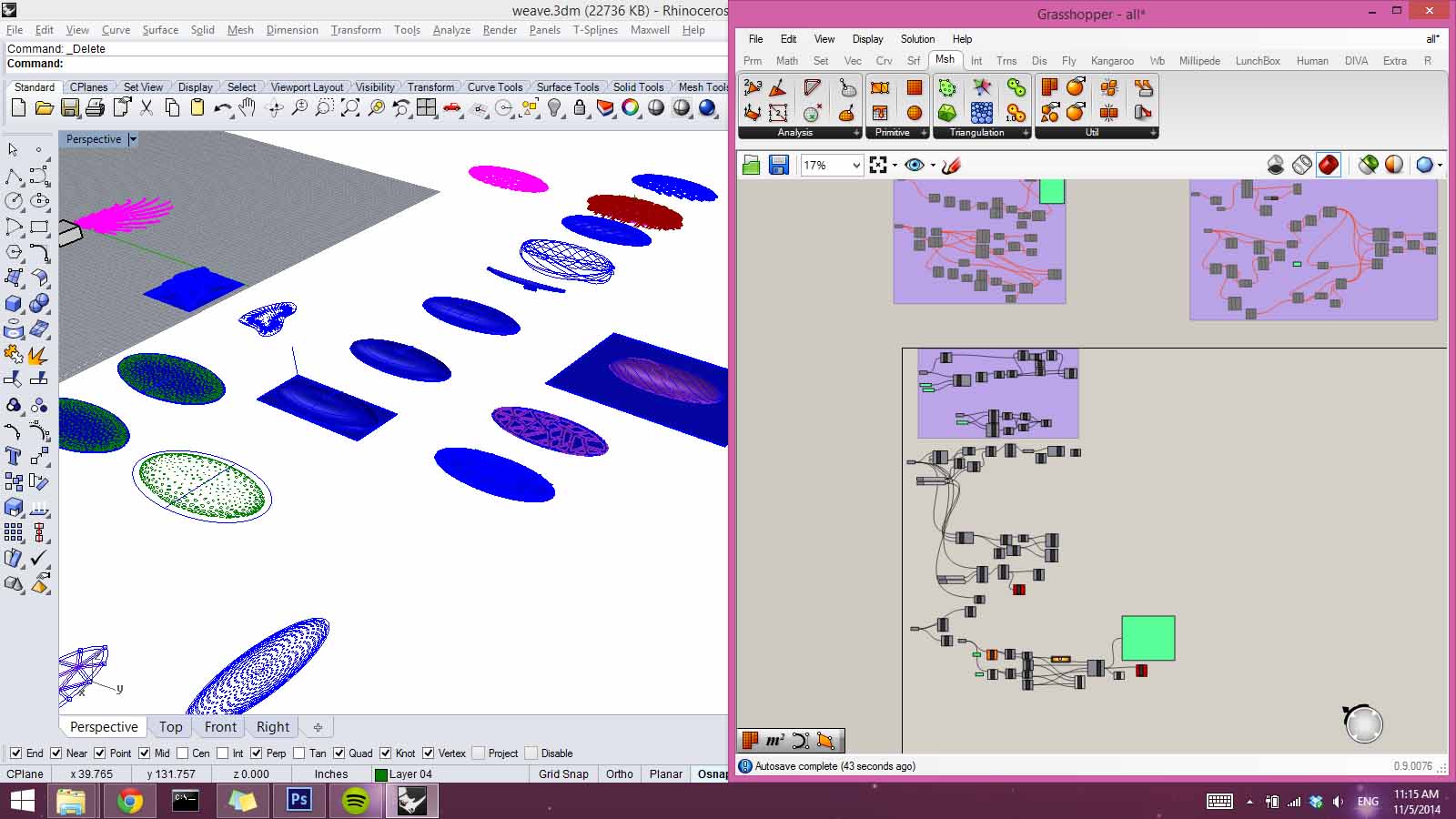
I decided I was pretty unhappy with the geometry and decided to re-mill a simpler shape, which would allow me to focus on the material properties. I settled on a stretched dome shape (still a bowl, I guess) and tried a number of different directions for panelizing it.
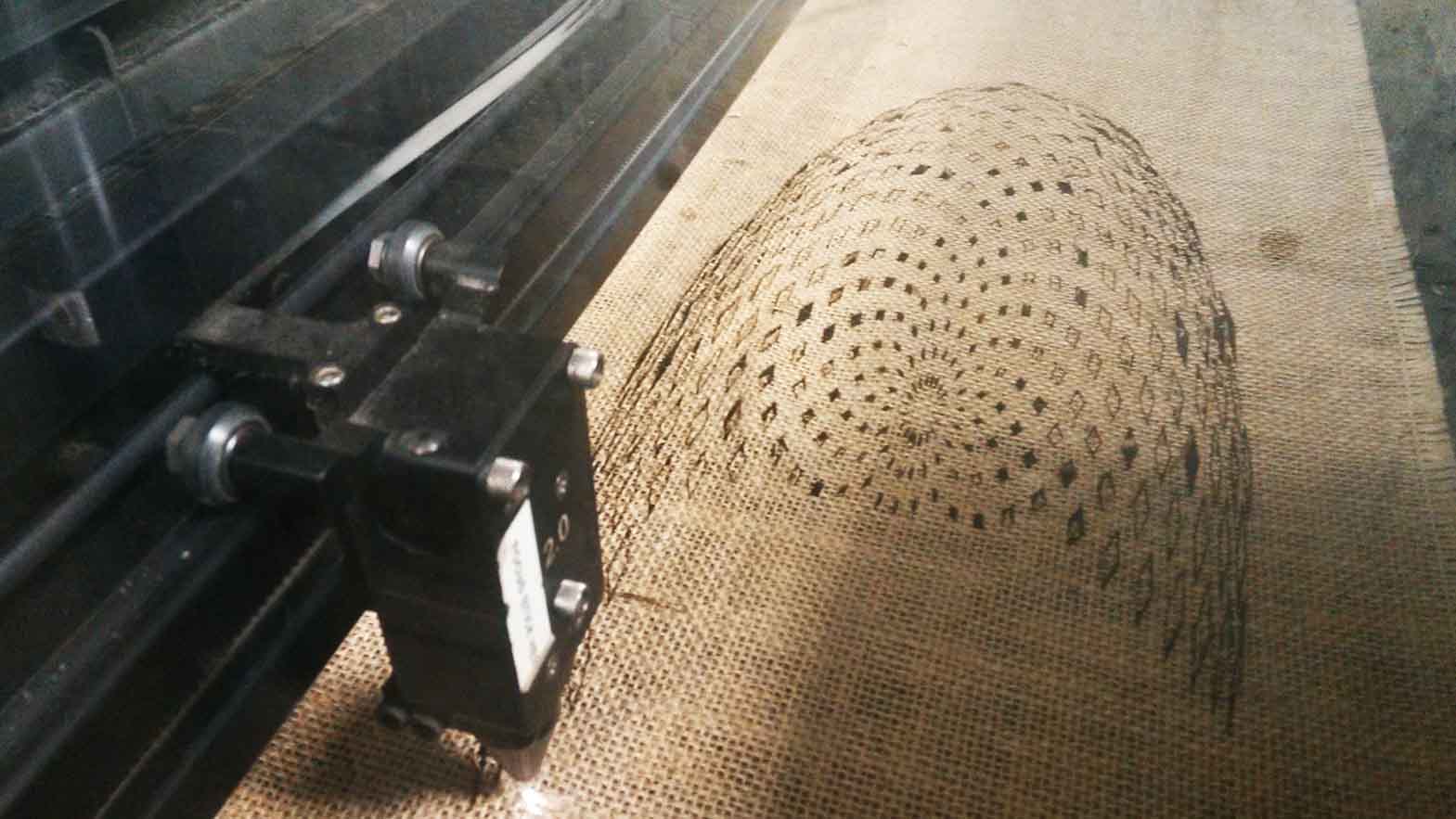
Cutting out a diagrid perforation pattern that would hopefully allow the material to stretch more towards the edges (perforation sizes were based on an attractor).
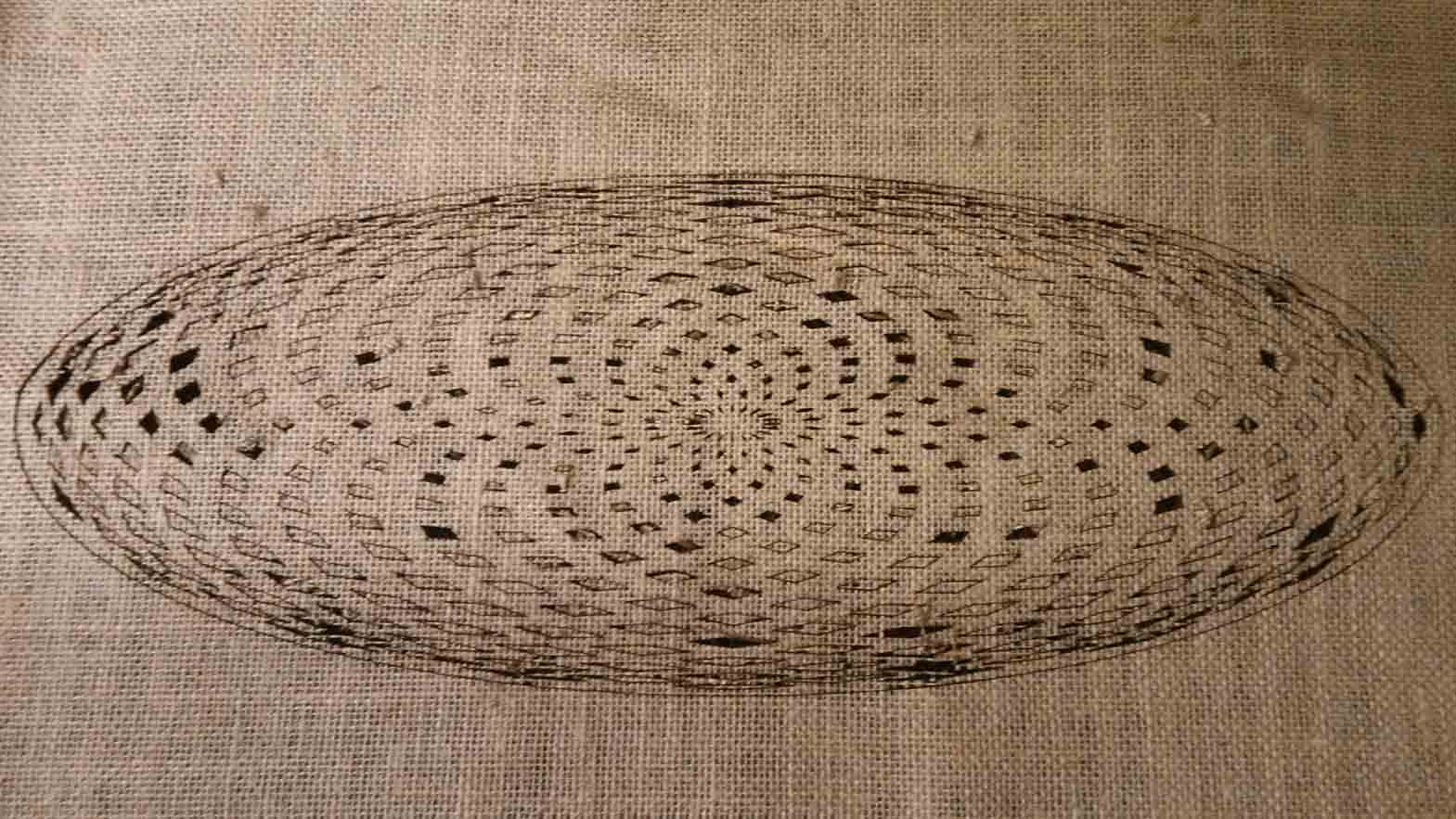
But it also didn't work.

So I started thinking about alternative patterns, especially ones that would work with the weave of the burlap. Then I realized that cutting strips of burlap at a 45 degree angle would allow it to stretch. With a suitable width, these strips could be woven together and could adapt to variable curvatures and densities. Here are strips after being laser cut.

New, simpler mold being covered in cling wrap and sprayed with mold release.
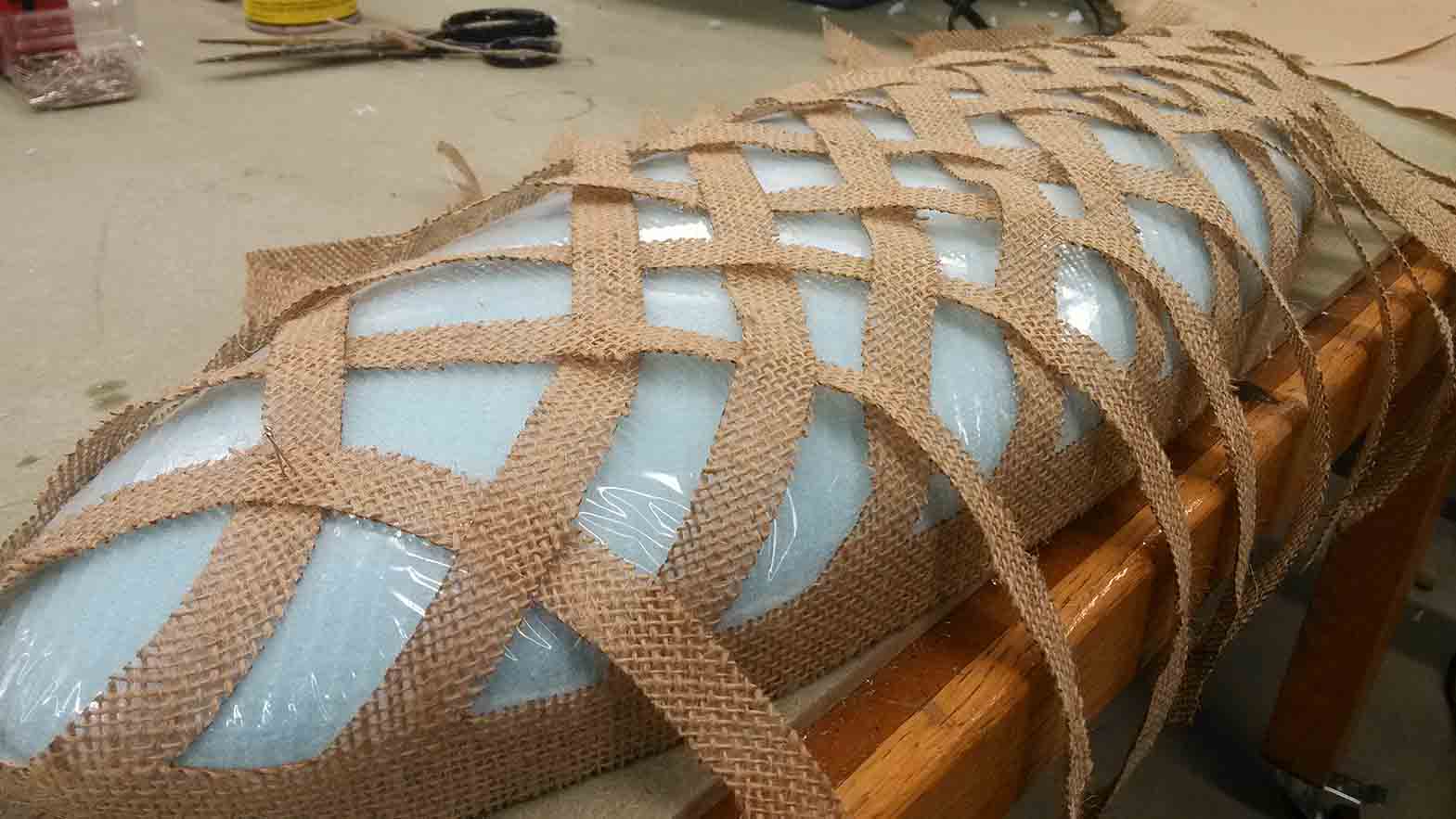
Wrapping the strips around the rim of the bowl, pinning them into place. For what it's worth, I like the idea of weaving something that's woven.

I also tried using extra strips at a denser weave to try on the previous mold.
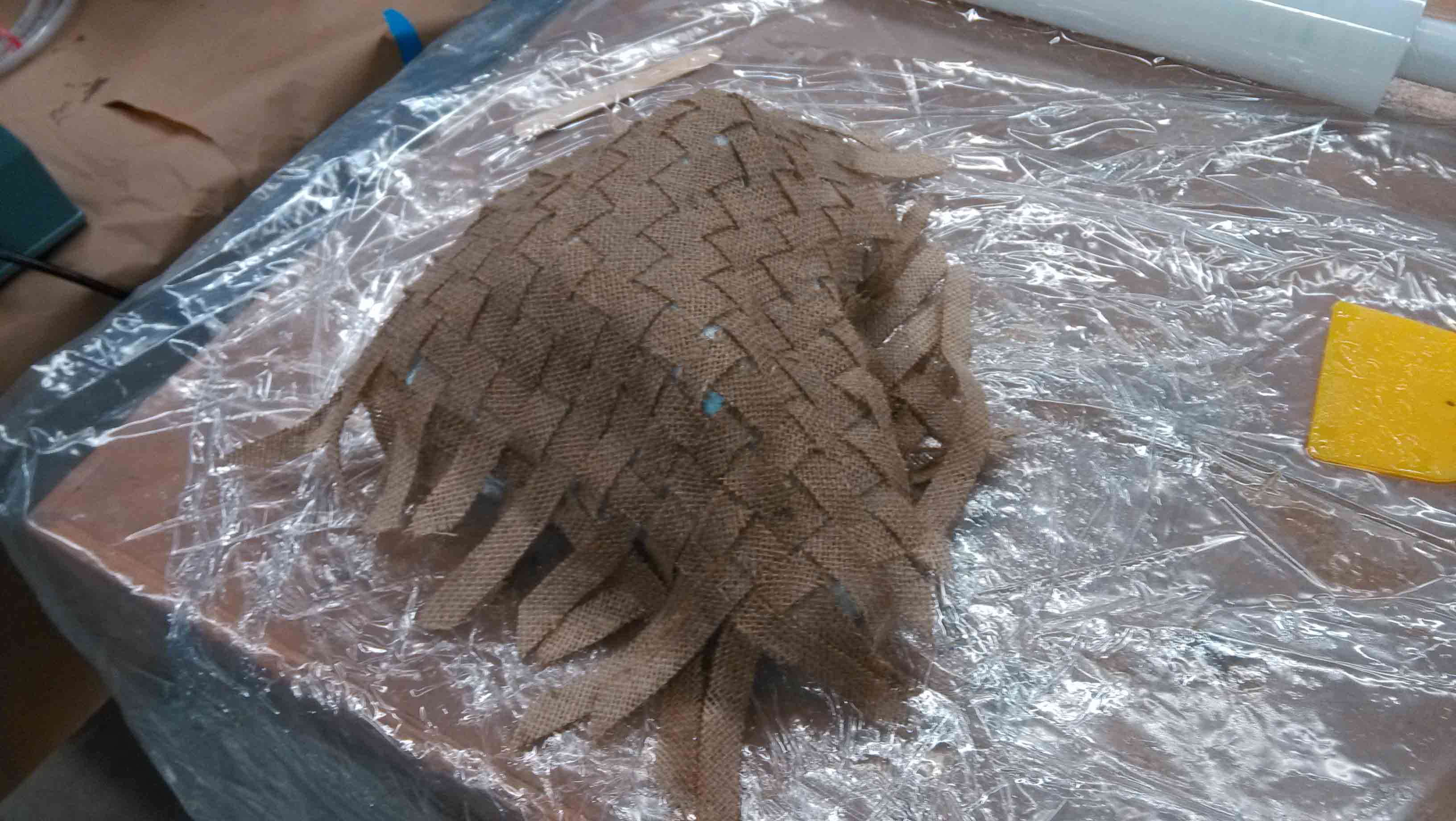
In this case the burlap was spread with resin when it was flat on the table.
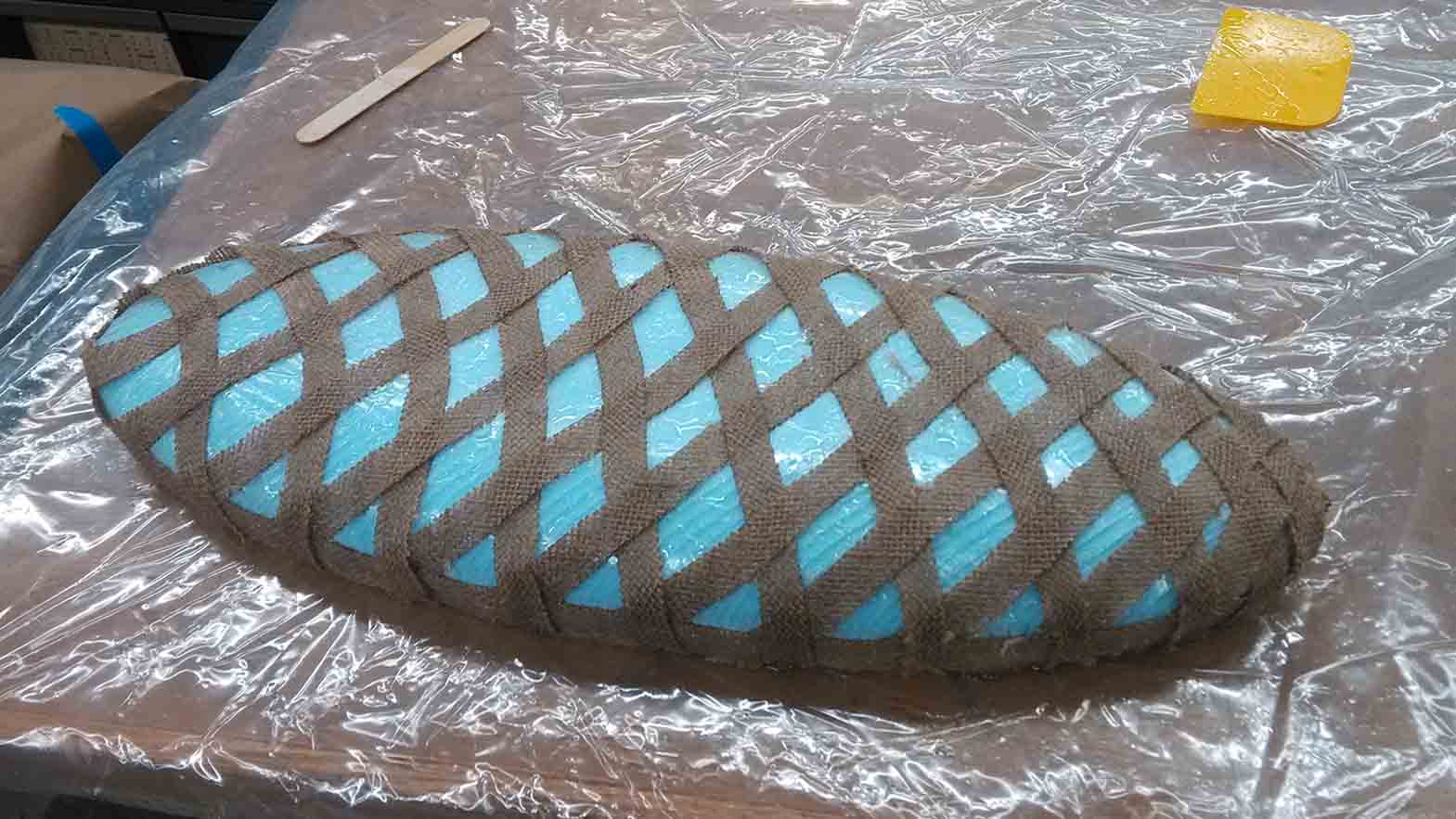
But the larger bowl of course needed to be covered after being laid on the mold. However, that wasn't a problem, the resin seems to have gotten everywhere, since it's just one layer.

Taking it out the next morning took longer than expected. The pins were stuck and had to be cut out. The tighter weave came out easier.
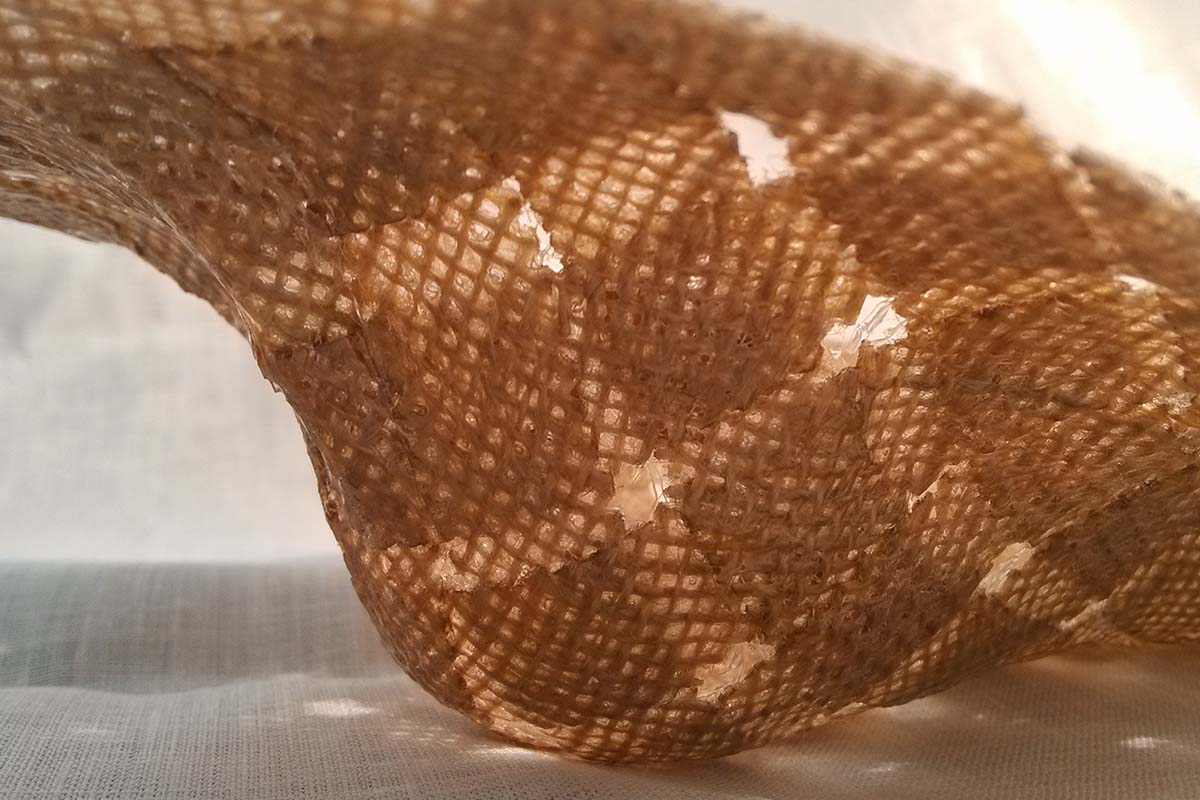
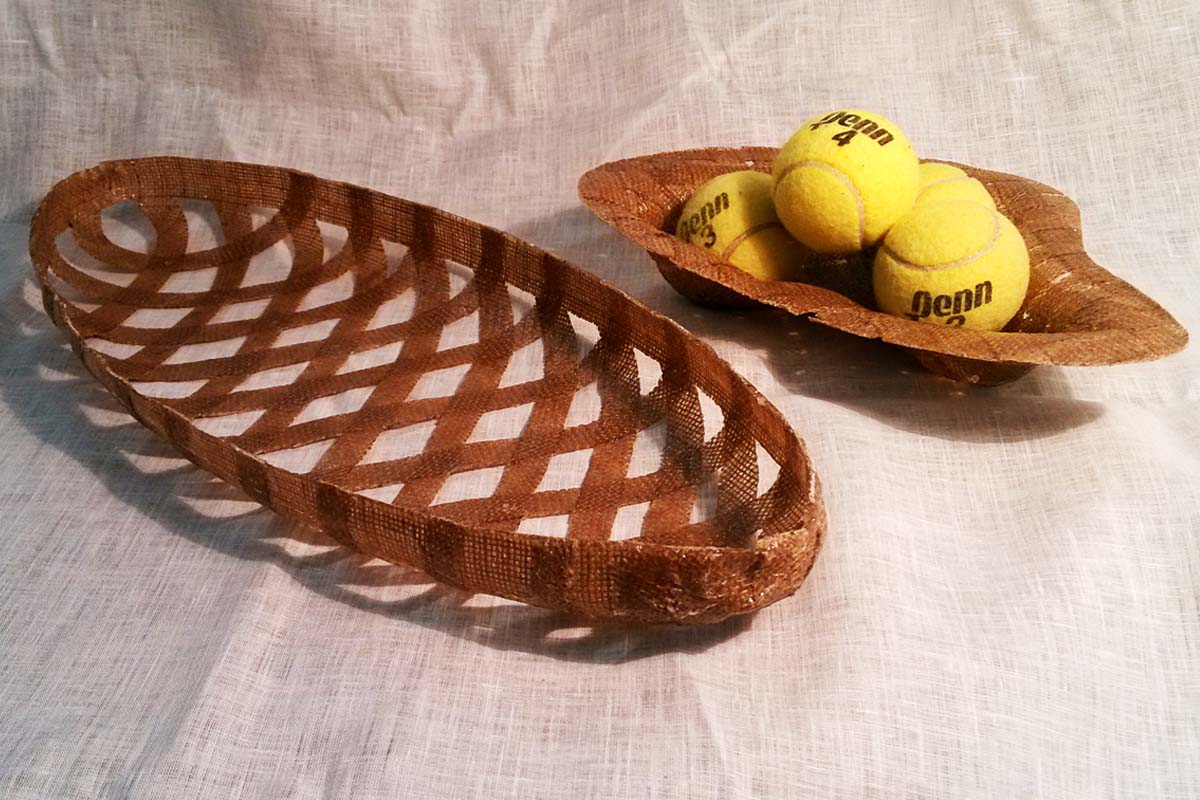
I couldn't find any fruit nearby, but I did find tennis balls.
